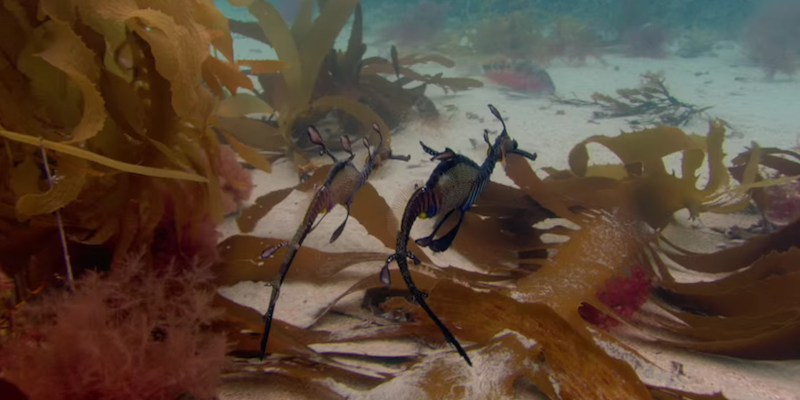The weedy seadragon, (Phyllopteryx taeniolatus) is a beautifully decorated species of marine fish related to the seahorse and the pipefish. The weedy seadragons is endemic to the Southern coast of Australia and are found living in seagrass beds where they can camouflage by drifting and swaying in between the seagrass leaves.
Adult weedy seadragons can reach a length of 45 cm and have a dark reddish color to their body with bright yellow spots and iridescent purple stripes markings covering its body. Along its back, the weedy seadragon has a long dorsal fin, with smaller pectoral fins on either side of their neck for balance.

The weedy seadragon is covered in small appendages that looks like leaves or seagrass which it uses as camouflage, and is covered in tiny spines for protection. The weedy seadragons eat small zooplankton or tiny crustaceans they find amongst the seagrass.
Weedy seadragons are still uncommon in home aquarium however there are a few public aquariums in the USA have these magnificent animals on display. The Birch aquarium in San Diego has been successful in breeding and keeping weedys in captivity and is one of only five aquarium in the USA which have been successful in breeding weedy seadragons.

Like their seahorse cousins, male weedy seadragon have the task of carrying the eggs on their tails as the baby seadragons develop and until they hatch. The eggs still start out in the female however she lays about 120 of them onto the tail of the male when they are fertilizes.
The weedy seadragons lack a prehensile tail, which seahorses use to hitch onto seagrass or corals which is why they are found drifting along the seafloor. This video by the BBC shows a courting pair of weedy seadragons dancing in the shallow seagrass beds.



